by Dr. Markoff We always have troubles with foxtails (grass awns) at this time of year on the Central Coast, but things have been extremely bad this year. In just the past month, Animal Care Clinic has seen 4 dogs develop a condition called pneumothorax and require emergency surgery to remove lung lobes!
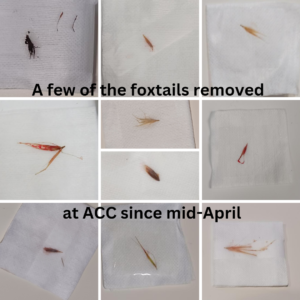 Foxtails most commonly get stuck in animals ears, eyes, noses and the skin between the toes. If you’ve ever had one stuck in your socks, you know how prickly they are and how much they hurt. One of the biggest issues with foxtails is that they are designed to move in only one direction. They are designed to keep burrowing deeper and deeper. Dogs have a lot more trouble with foxtails than cats do, but we see them commonly in both species. Removing them from eyes and ears is pretty routine with just light sedation, but can still leave behind infection and lots of inflammation. Dealing with foxtails in the nose or buried in the skin can sometimes be a lot more difficult, although most of the time the problem can be resolved in one visit.
Foxtails most commonly get stuck in animals ears, eyes, noses and the skin between the toes. If you’ve ever had one stuck in your socks, you know how prickly they are and how much they hurt. One of the biggest issues with foxtails is that they are designed to move in only one direction. They are designed to keep burrowing deeper and deeper. Dogs have a lot more trouble with foxtails than cats do, but we see them commonly in both species. Removing them from eyes and ears is pretty routine with just light sedation, but can still leave behind infection and lots of inflammation. Dealing with foxtails in the nose or buried in the skin can sometimes be a lot more difficult, although most of the time the problem can be resolved in one visit.
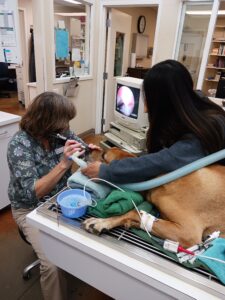 When foxtails show up in other places, they can really be a bother and even become life threatening. I’ve seen cases where a single foxtail has traveled around in the tissues of the body for years – a huge abscess will pop up somewhere every few months. So frustrating! The cases we have seen recently were due to dogs inhaling a foxtail into their lungs and they all came in looking very similar: An outdoorsy dog comes to us just a little off his or her game – quiet and maybe not eating great, but otherwise okay. We find a fever and a mildly elevated white blood cell count. Chest x-rays are normal on the first day we see them. A day or two later things get worse and now a chest x-ray shows something called pneumothorax. That means air has gotten into the space around the lungs.
When foxtails show up in other places, they can really be a bother and even become life threatening. I’ve seen cases where a single foxtail has traveled around in the tissues of the body for years – a huge abscess will pop up somewhere every few months. So frustrating! The cases we have seen recently were due to dogs inhaling a foxtail into their lungs and they all came in looking very similar: An outdoorsy dog comes to us just a little off his or her game – quiet and maybe not eating great, but otherwise okay. We find a fever and a mildly elevated white blood cell count. Chest x-rays are normal on the first day we see them. A day or two later things get worse and now a chest x-ray shows something called pneumothorax. That means air has gotten into the space around the lungs.
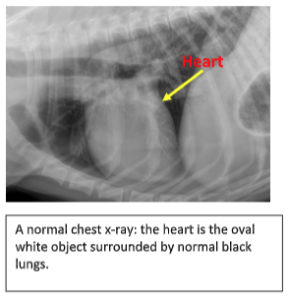
Our lungs and chest are designed to have air in the lungs, but absolutely no air or anything else around the outside of the lungs. When you or your pet contract your diaphragm and the muscles between your ribs, it causes your rib cage area to expand. Because there is nothing between your chest wall and the lungs (it is a vacuum!), your lungs expand with the chest. If the vacuum is gone, the lungs will not expand and thus you cannot breathe. Air on the outside of the lungs makes it so you cannot breathe! This happens frequently from trauma (hit by a car, etc), but in the case of the foxtail it is happening because either the foxtail penetrated the outer wall of the lung, or infection caused the area to open up.
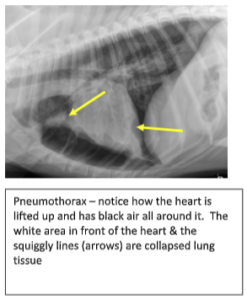
Treatment for pneumothorax usually requires a needle or chest tube placed and removing all of the air outside of the lung. In many cases, the hole in the lung seals up and no further treatment is required. For all of our recent foxtail cases, the holes did not seal. That meant surgery to remove the damaged lung lobe. This is a big surgery and should be done at a specialty center. While all of our patients are doing fantastic now, these were very big bills. One family spent $40,000 on their foxtail event!
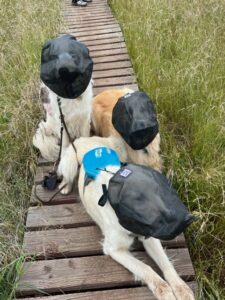 So what can you do? First – be sure your pets have health insurance! It makes a huge difference when you are faced with a crisis like this. Secondly, do all you can to avoid foxtails. There are some cool masks that can help (one company is called OutFox). Be careful on hiking trails, especially if they have been clearing tall grasses – you simply cannot avoid foxtails in that situation as they pile up on the ground. If you are trimming/mowing at home, recognize it is weed whacking that causes the issues. If you can run a mower over the weed-whacked debris you can sort of vacuum up the foxtails left behind – be sure to empty the bags far away from your pets! In San Luis Obispo county, you cannot completely avoid foxtails as they get everywhere. If your pets are acting weird in any way, call us ASAP so we can intervene before things get out of control.
So what can you do? First – be sure your pets have health insurance! It makes a huge difference when you are faced with a crisis like this. Secondly, do all you can to avoid foxtails. There are some cool masks that can help (one company is called OutFox). Be careful on hiking trails, especially if they have been clearing tall grasses – you simply cannot avoid foxtails in that situation as they pile up on the ground. If you are trimming/mowing at home, recognize it is weed whacking that causes the issues. If you can run a mower over the weed-whacked debris you can sort of vacuum up the foxtails left behind – be sure to empty the bags far away from your pets! In San Luis Obispo county, you cannot completely avoid foxtails as they get everywhere. If your pets are acting weird in any way, call us ASAP so we can intervene before things get out of control.








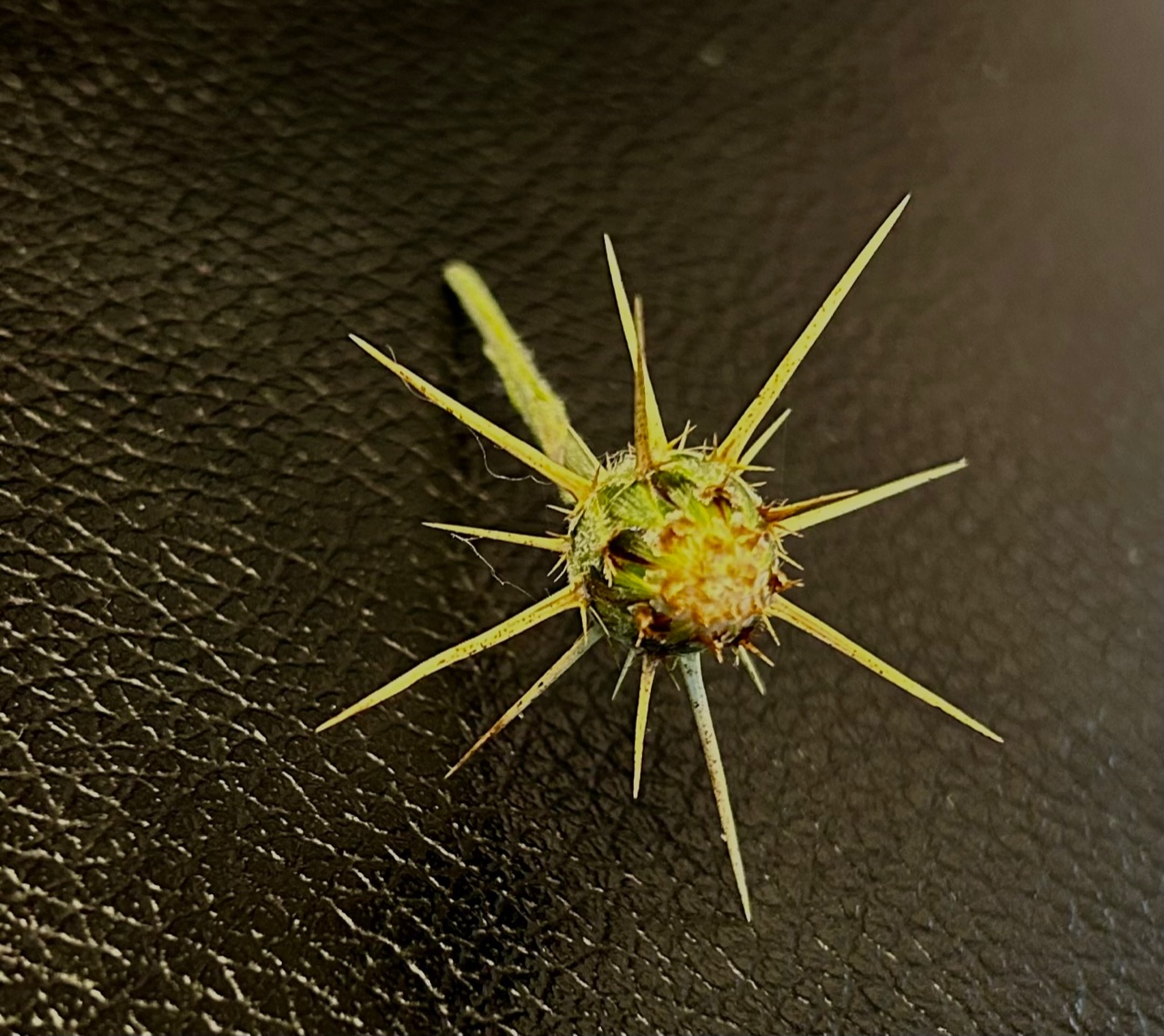
Leave A Comment
You must be logged in to post a comment.